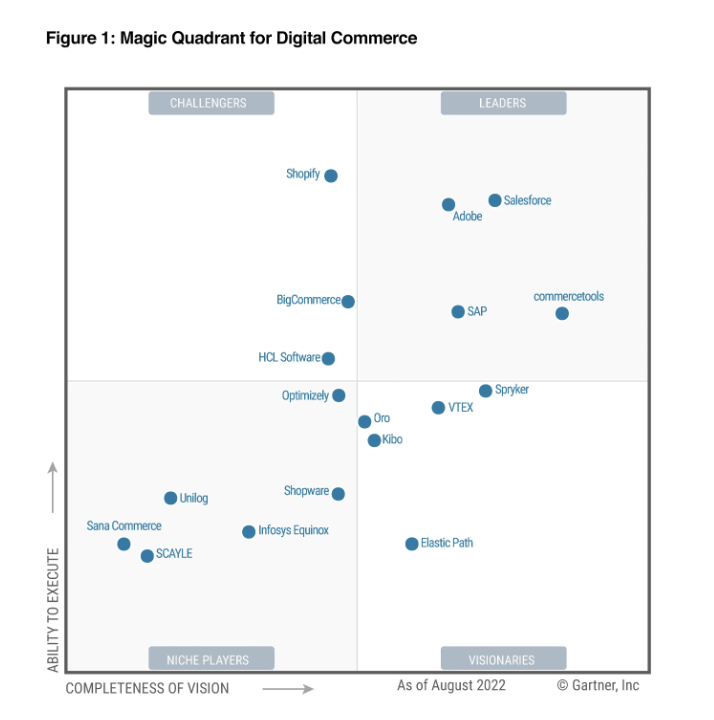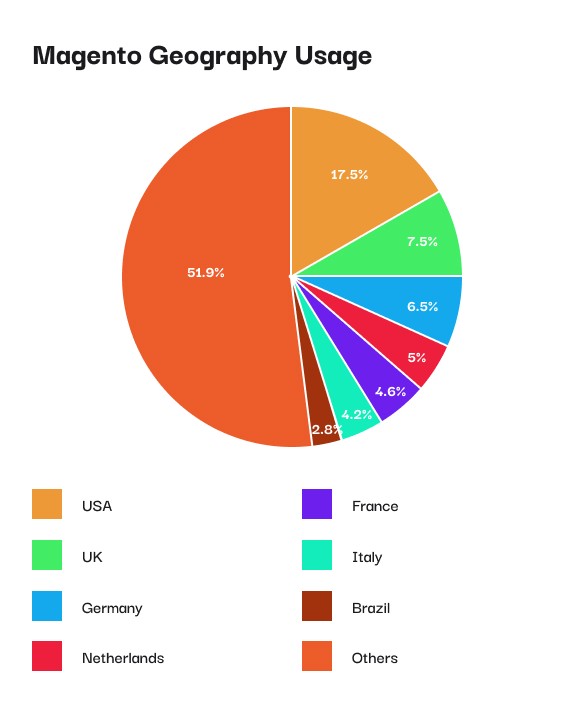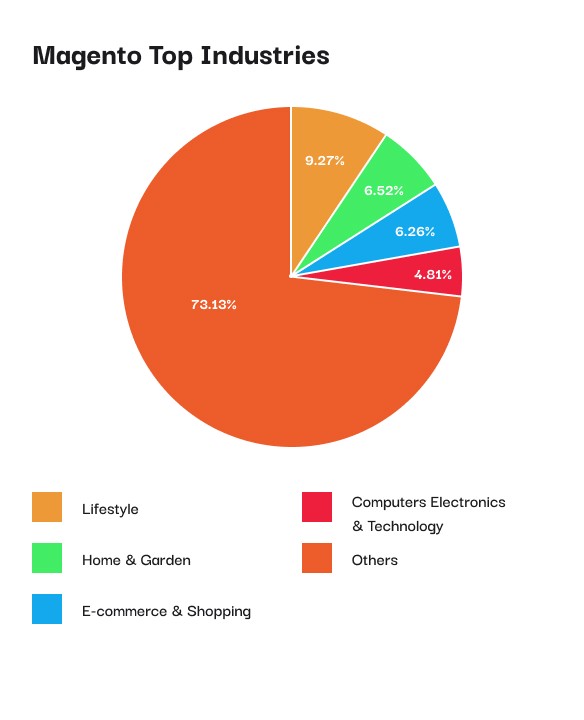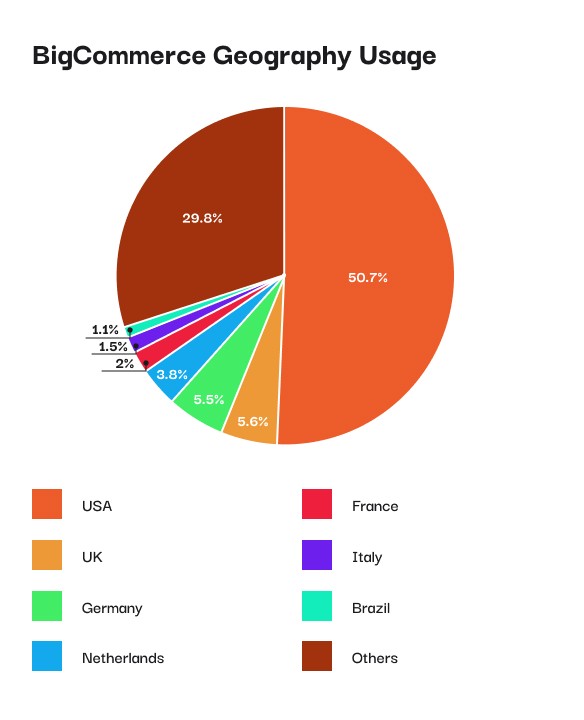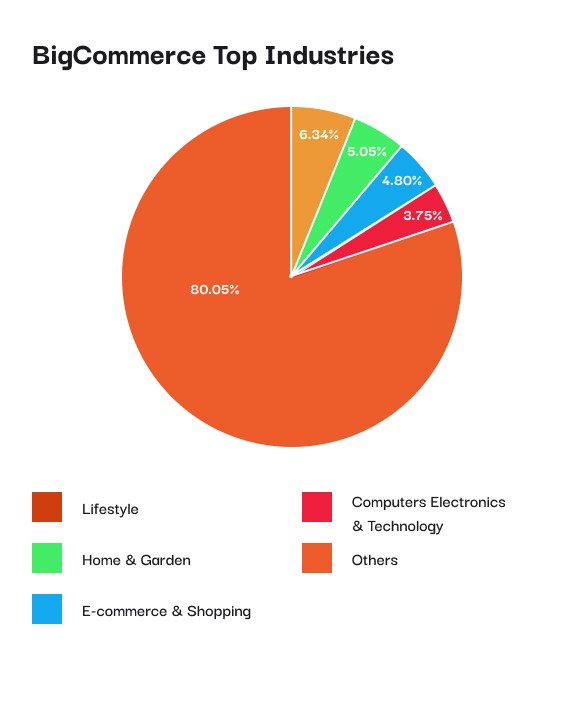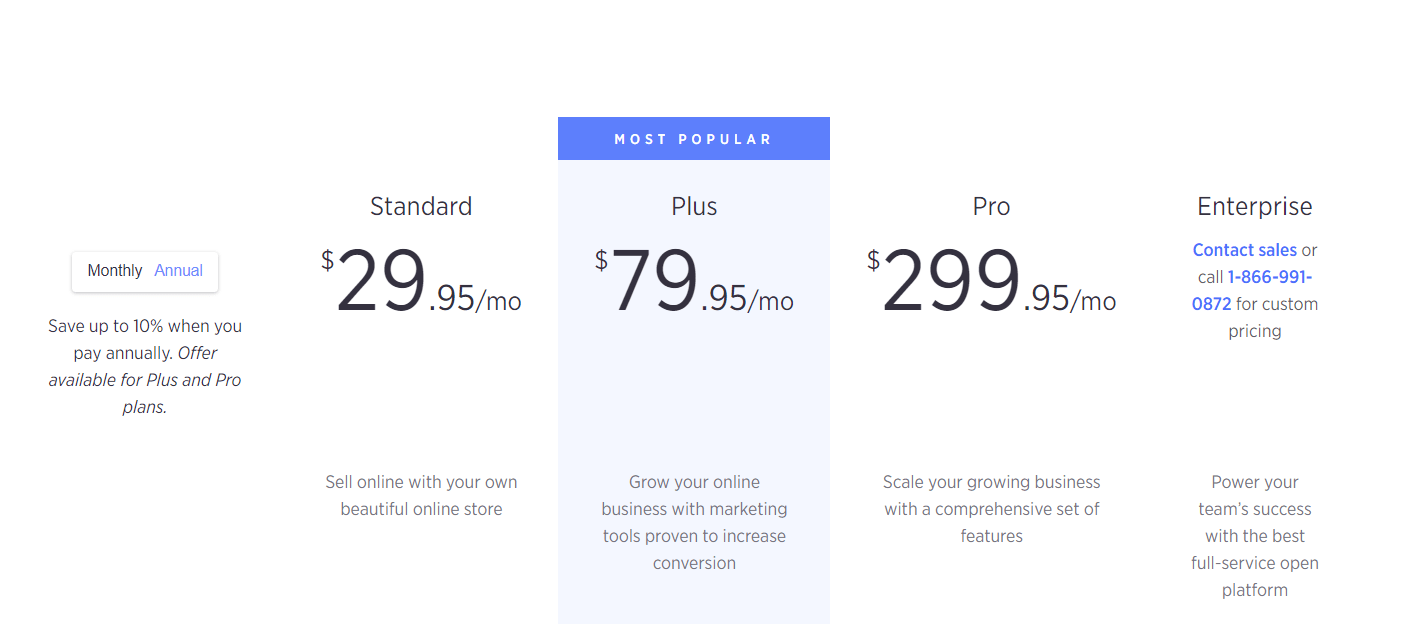Magento vs BigCommerce: Which eCommerce Platform Fits Your Needs?
Ecommerce platforms serve the same purpose: they give you the space and tools to put a business online. But you need to dig deeper to figure out which particular platform will cover your needs at the best price. For that, read our BigCommerce vs Magento comparison.
In Gartner’s Magic Quadrant 2022 report, Magento 2 (Adobe) and BigCommerce happened to be on different sides of the coordinate axis.
Magento was called a leader, and the research company pointed out that the platform has rich functionality that covers a wide range of needs for online businesses of any size.
BigCommerce was named a challenger, and Gartner highlighted its modular architecture and flexibility.
Yet, let’s see what peculiarities each platform has to decide whether Magento or BigCommerce suits your business.
General Overview: Magento vs BigCommerce
Magento Overview
Market share: In 2022, almost 90,000 sites choose Magento for their businesses, according to SimilarTech.
Geography: Magento is widely used in the United States and the United Kingdom. Businesses from Germany, France, Spain, the Netherlands, Italy, and Australia also choose this ecommerce platform.
Top industries: Magento is the choice for such industries as lifestyle, home & garden, computer electronics, ecommerce & shopping, etc.
Top brands: Coca-Cola, Jaguar, Seat, Timberland, Ford, Land Rover, Helly Hansen, Everlast, Omega, Fred Perry, Monin, Björn Borg and others.
BigCommerce Overview
Market share: SimilarTech shows that 37,000 websites are developed on the base of BigCommerce.
Geography: BigCommerce is deployed primarily in the US. However, businesses from the UK, Australia, and Canada also use this platform more and more.
Top industries: Lifestyle, sports, home & garden, vehicles, etc.
Top brands: Sony, Razer, Black Diamond, Adore Beauty, GE Appliances, and others.
BigCommerce vs Magento: All You Need to Know
The overview of features, pricing, scalability, performance, available extensions, and other factors is the most helpful when you need to make a choice in favor of one or another ecommerce platform. So let’s get to it!
Key Features
Magento is flexible in terms of features. If you own a small store, you can launch it online with the basic functionality that a free version of Magento (Magento Open Source) offers. If you have a mid-size or large business, you can opt for a paid option (Adobe Commerce) and enhance your online shop with multiple tools, such as B2B, multichannel selling, and artificial intelligence.
BigCommerce also provides a rich feature set that covers the basic needs of an online store. In some cases, this platform can outshine Magento, in some not. After all, it’s all a matter of what exactly you need.
| Features | Magento | BigCommerce |
|---|---|---|
| Hosting | Cloud-based/On-premises/Third-party | Cloud-based |
| Inventory management | Yes | Yes |
| Product catalog | For middle-size and large stores | For small stores |
| Payment options | 3 in-built method + integrations with more payment gateway via API | 65 pre-integrated payment methods (in some countries, there is less options available |
| Shipping options | 3 basic options + a large variety of integrations available | 3 basic options + a large variety of integrations available |
| Multilingual capabilities | In-built multilingual support | Supported with extensions |
| B2B | Possible with Adobe Commerce | Possible with BigCommerce B2B Edition |
Pricing
As mentioned, Magento comes in two editions: Magento Open Source and Adobe Commerce. You can benefit from the former cost-free if you run a small business. If you are launching a fast-growing mid-size business or you want to open a large online store, Adobe Commerce will suit your needs more, and it will cost you $22,000+/year.
BigCommerce pricing comes in a subscription-based model. However, the platform decides which plan you are going to pay for: BigCommerce assigns the plan based on your annual income. And even if you start with standard pricing, but the business scales up, the platform will move you to a plus or pro plan, depending on your annual sales.
Here you can see BigCommerce pricing plans:
Keep in mind that Magento and BigCommerce often need extensions to unlock more features. Many extensions are paid, so you need to include them in your budget.
Themes & Extensions
Magento themes can be acquired in the Magento Marketplace: there are free and paid ones (prices can reach $500). On top of that, many other companies offer tons of themes for Magento stores, so you can choose something to your taste. You can also hire a designer who can create opt for a custom theme for your website.
BigCommerce offers around 15 free themes and 100+ paid ones (prices range from $150 – $300 each). All of the themes offered in Theme Store are responsive, SEO-friendly, and can be easily customized. Custom themes with BigCommerce can also be an option.
If it comes to extensions, most platforms have thousands of them to cover almost everything an online store needs. This is the beauty of the modern ecommerce industry.
Magento Marketplace offers over 5,000 extensions. Some of them are paid, and some are free. Extensions cover different functionalities: SEO, customer support, accounting, shipping and payments, security and website optimization. Separate companies, such as Amasty, Megaplaza, and Magefan present even more extensions for Magento.
BigCommerce has about 1,000 official extensions in the App Marketplace, also free and paid. And even though the number of apps is not as large as for Magento, you can find them for any purpose as well, including marketing, financing, merchandising, analytics, ERP, CRM, and more.
Performance & Scalability
Sooner or later, your business will grow, and you will need to scale up your website. If the platform doesn’t allow your online store to extend its features and add more functionality smoothly, it will result in poor performance. And this is unacceptable for ecommerce since you’ll lose customers.
Magento, even its Open Source edition, is considered highly scalable. It can handle 250,000 SKUs in a catalog and process around 2,500 orders per hour. The platform’s infrastructure is designed to maintain high-load traffic. And you can add more extensions to your website, and Magento will work just fine: pages will load quickly. Its modular framework is a key to good scalability without sacrificing performance. Yet, you will need developers to back up your growth.
BigCommerce, unfortunately, cannot offer as good scalability as Magento. Generally, it handles 30,000 products in a catalog. And a few apps can already slow down your website. BigCommerce doesn’t need as much developers’ support as Magento, which is kind of good in terms of your budget. But the tricky part is that without developers, you cannot optimize the code of a website, ensure smooth growth, and eliminate performance issues.
Security
Both Magento and BigCommerce are well-secured. Both platforms regularly release security patches, are ISO/IEC 27001:2013 certified, which means they manage all data according to the international security standard, and have many extensions for introducing more security.
Magento ecommerce platform also offers two-factor authentication and is compliant with PCI DSS, which stands for Payment Card Industry and Data Security Standards, respectively.
Both services work with SSL certificates. However, BigCommerce offers them for free, and Magento doesn’t. Nevertheless, you can choose a hosting provider offering free SSL certificates for Magento and leave your worries behind.
Marketing & SEO
Marketing and SEO are indispensable for not only online shops but actually all websites that exist on the Internet. So many ecommerce platforms offer these features out of the box.
Both Magento and BigCommerce allow users to:
- ✅Edit metadata in the admin panel
- ✅Add alt text to images
- ✅Customize user-friendly URLs
- ✅Generate XML sitemap
- ✅Add rich snippets
If you want to enhance content and email marketing as well as SEO, there are tons of extensions available for both platforms. So, every business can be cool about marketing activities and the SEO-friendliness of their shopping websites.
Conclusion: BigCommerce vs Magento
Magento and BigCommerce are pretty much well-equipped with features and tools for a fine online store. To each their own, so you need to dive into the intricacies of these two platforms and decide which one will fit your business needs more. In short, Magento is best for middle-size and large businesses, while BigCommerce is better for small ones. But if you don’t want to limit your choice with just these two services, you can also check if Shopify, WooCommerce, or Shopware work best for you.
Looking for eCommerce development backup?
Share your contact information, and we’ll be back to you in no time
